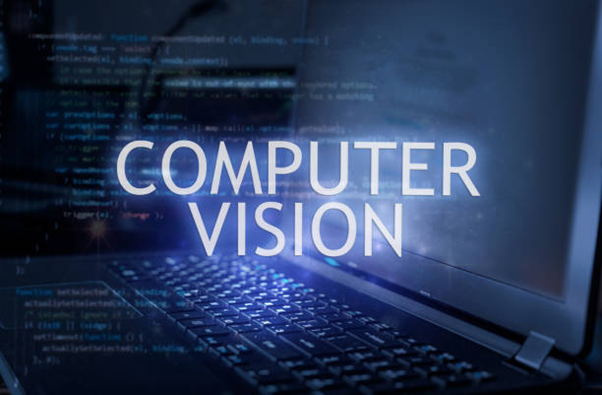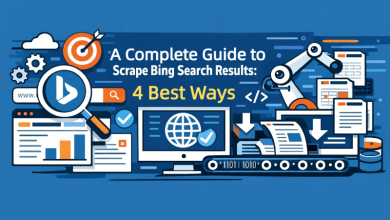
Technology today feels more connected to our daily lives than ever before. Every photo clicked, every video streamed, and every camera around us is producing data. But what if businesses could understand this data the way humans use their eyes?
That’s exactly what computer vision does. It helps systems see, read, and interpret images and videos just like humans, but at a much faster and smarter scale.
For modern businesses, this opens the door to faster decisions, smoother operations, and fresh ideas for growth. From tracking products to improving customer experiences, computer vision has turned into a reliable partner that works quietly in the background but delivers visible results.
Understanding Computer Vision
Computer vision is a branch of artificial intelligence that allows machines to see and make sense of images and videos. Think of it as giving eyes and a basic level of understanding to a computer. Instead of just storing photos or videos, a system powered by computer vision can identify patterns, recognize people or objects, and even analyse movements.
For example, it can spot quality differences in products on an assembly line, identify customers in a store to improve service, or analyse fields for better farming. It takes raw visual data and translates it into insights that humans can use quickly. This blend of AI and visual data is making tasks faster, more accurate, and more reliable.
If you want to read more, you can explore computer vision services that show how this technology is used in real business applications.
Why Businesses Are Turning to Computer Vision
The attraction of computer vision is simple—it reduces effort and improves results. Businesses can now process large amounts of visual data instantly, something humans would need hours or even days to do. Let’s see why companies are putting it into practice.
Automating Repetitive Work
Many tasks in industries like retail, manufacturing, or logistics involve repetitive checking and monitoring. Computer vision automates these steps, leaving teams free to focus on more meaningful tasks. Instead of spending hours on inspections, businesses can let computer vision systems handle it with speed and consistency.
Improving Security and Trust
One of the most important uses of computer vision is security. From facial recognition for secure access to real-time video monitoring, it creates safer environments. Offices, financial institutions, and public spaces can all benefit from systems that recognize potential risks instantly and take action. This makes the entire environment feel more trustworthy.
Personalizing Customer Experiences
Computer vision is also changing the way companies interact with customers. Stores can study how people move, what products they look at, and even how long they spend in different sections. This helps create personalized experiences, from targeted promotions to improved layouts. In entertainment, computer vision allows gesture-based interactions that make experiences more interactive and fun.
Supporting Smarter Decisions
Every business depends on making decisions at the right time. Computer vision provides managers with accurate information drawn from visual data. For example, agriculture companies use it to track crop health, while energy companies monitor infrastructure with it. These insights help teams make decisions with confidence and speed.
How Computer Vision Works in Business
Now that we know what computer vision does, it’s time to see how it is put into action. Businesses usually follow a structured approach to get the most out of it.
Step 1: Business Analysis
Every successful project begins with understanding what the business needs. Teams define the exact problem and how computer vision can solve it. This clear starting point ensures that the system developed will deliver real results.
Step 2: Data Study
Since computer vision relies on images and videos, businesses study their data carefully before development. This includes cleaning, labeling, and understanding the types of visuals available. With the right dataset, the model can be trained effectively.
Step 3: Designing the System
Once the data is ready, the design phase begins. Here, the team decides on the model structure, what sensors are needed, and how the system will integrate into existing business processes. It’s like preparing the blueprint of a building before construction.
Step 4: Development of Models
The development stage is where deep learning and AI techniques come in. Models are trained using images and videos, and then tested to make sure they perform accurately in real situations.
Step 5: Integration and Use
After building, the system is integrated into the business environment. It could be installed on machines, connected to software dashboards, or linked with mobile apps. The goal is to make the technology accessible and useful to teams.
Step 6: Continuous Support
Even after launch, businesses receive regular support. Computer vision systems learn and improve over time, so regular updates and fine-tuning ensure they continue to deliver the best results.
Real-Life Uses of Computer Vision
Computer vision may sound like a concept for large industries, but it is already shaping many parts of life and business. Here are some areas where it is creating a visible impact:
Smart Cities and Infrastructure
Governments use computer vision for monitoring roads, detecting cracks in pavements, and managing traffic systems. This keeps cities safer and better maintained.
Agriculture
Farmers benefit from computer vision by monitoring crops and soil conditions. With detailed visual insights, they can improve yield and manage resources effectively.
Retail and Customer Experience
Stores use computer vision to analyse customer movements and preferences. This helps create layouts that are easier for customers and offers that match their interests.
Entertainment and Lifestyle
From motion detection in fitness applications to gesture-based games, computer vision adds new levels of interactivity. It turns everyday activities into more enjoyable experiences.
Energy and Environment
Energy companies apply computer vision to monitor large structures and even renewable energy sites. This helps maintain efficiency and supports sustainability.
Final Thoughts
Computer vision is not just another piece of technology; it is shaping how businesses think and act. Turning images and videos into actionable insights allows industries to automate, personalise, and grow with confidence.
From smarter cities to better customer experiences, its uses are expanding every day. For businesses ready to step into the future, computer vision is one of the most valuable tools to start with today.


